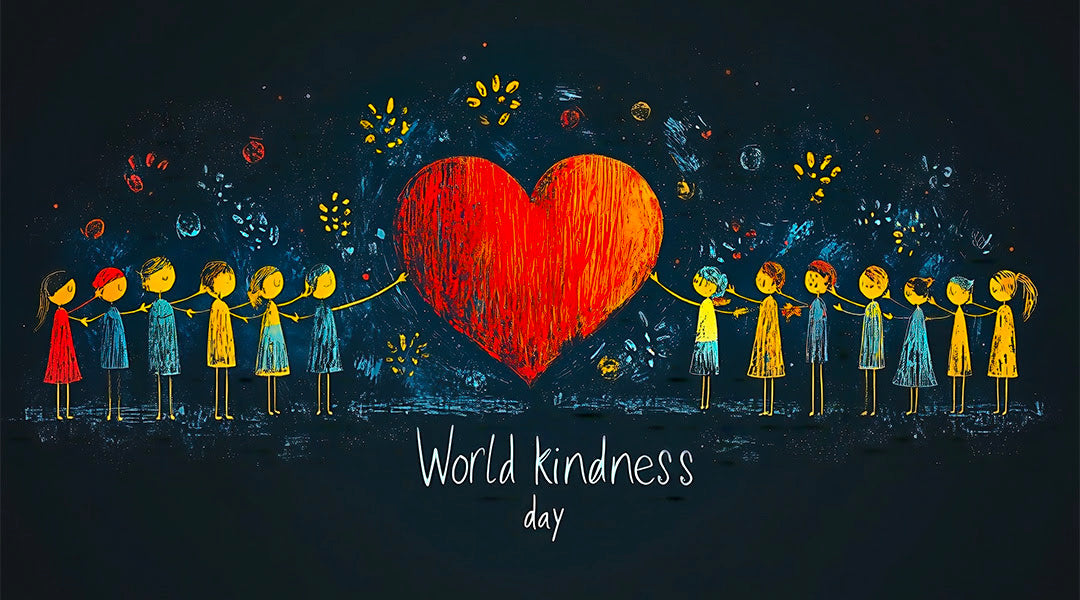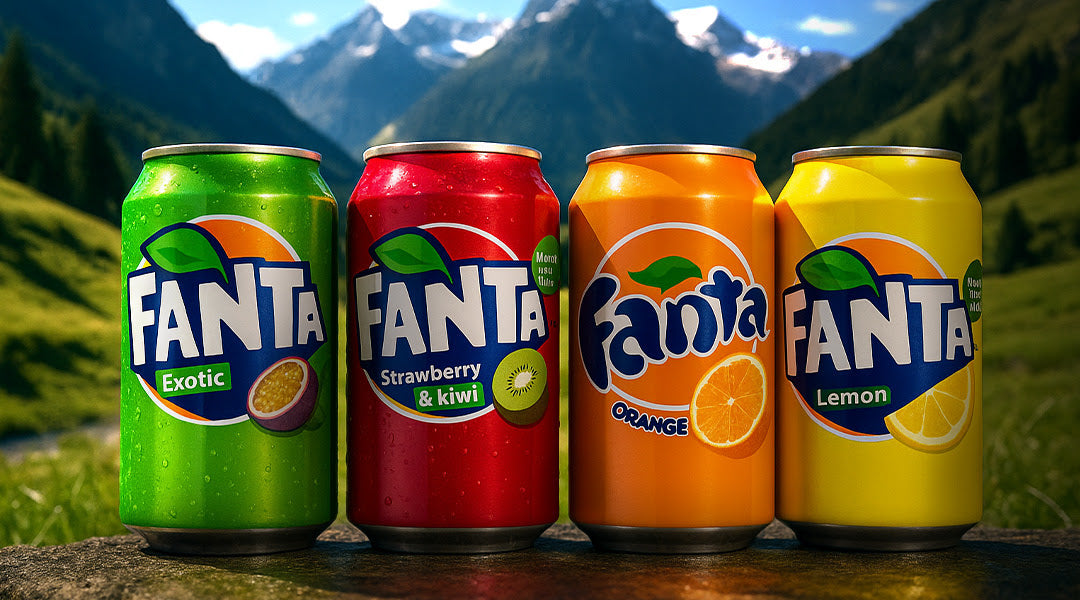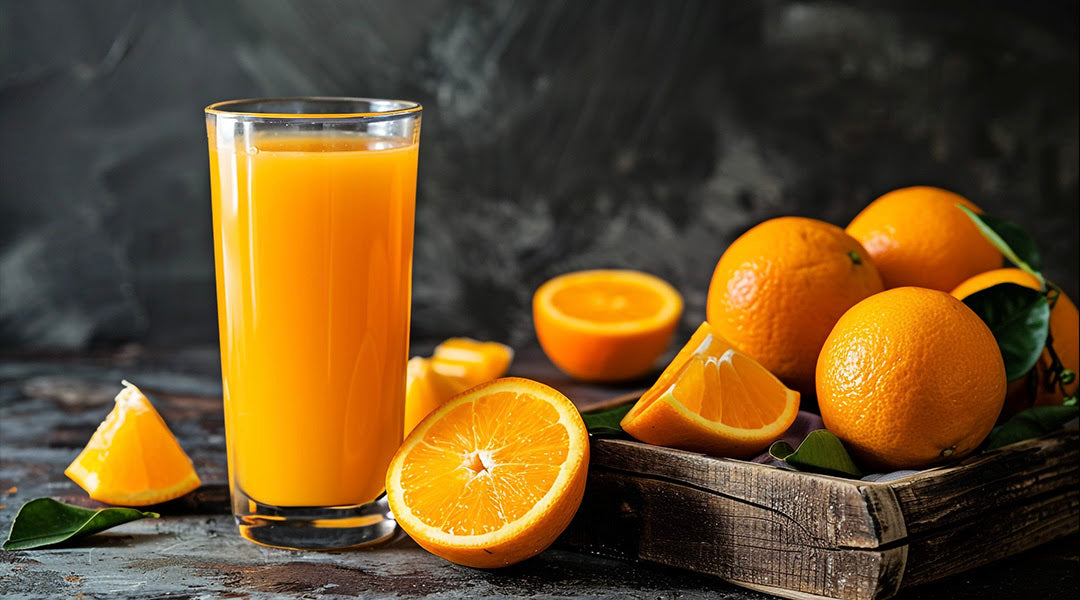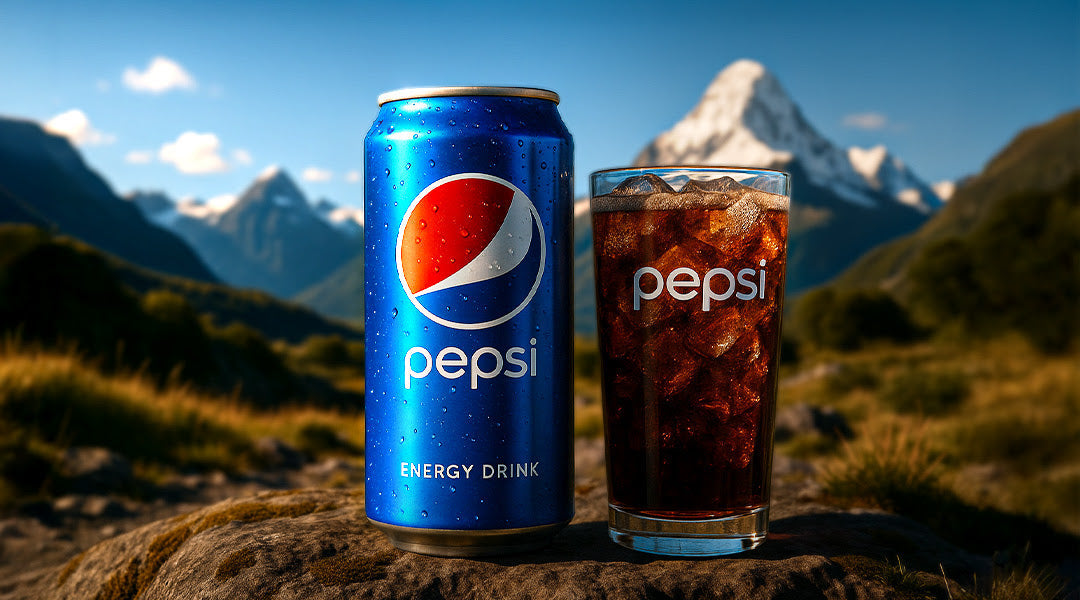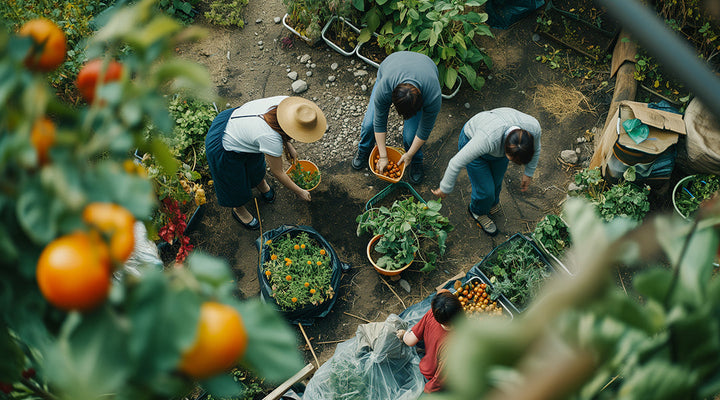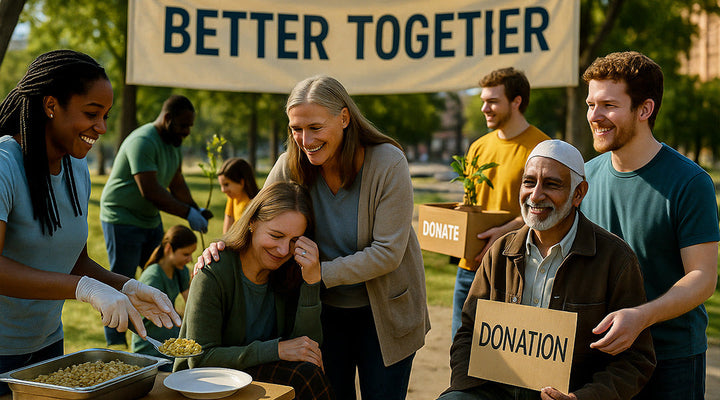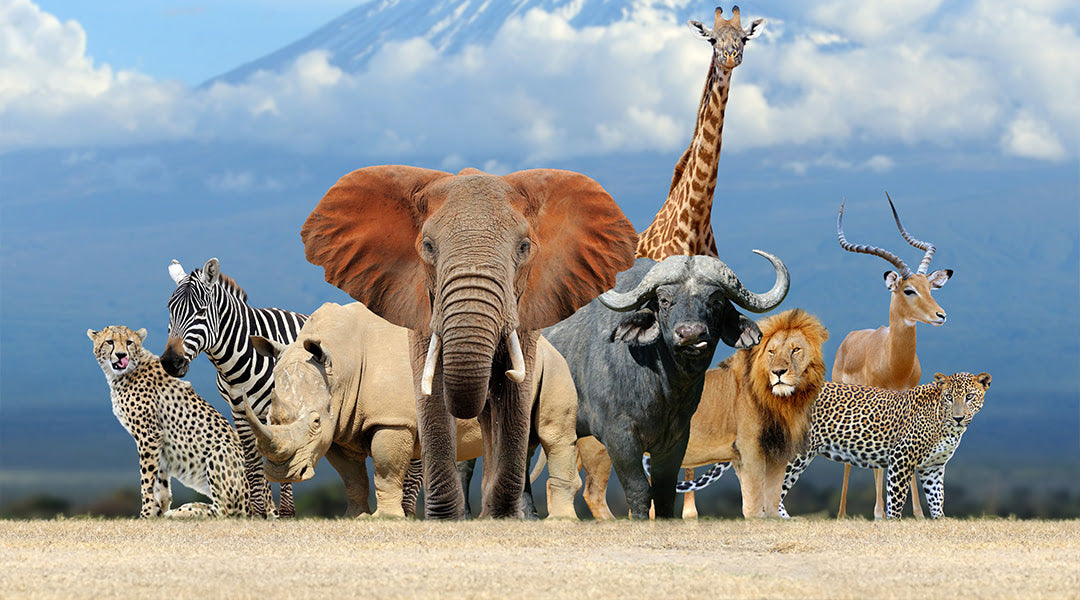
Every Species Matters - Animals, Ecosystems, Coffee, And The Rainforest Trust
How important are animals to our world?
With a question like that, you might be prone to immediately think of your pets and how they brighten each moment of your day. You may even think of how you couldn’t imagine life without them.
And, while I know full well how a pet (or multiple pets) can positively impact a life, today we’re actually talking about an even greater impact. From the foods we eat and enjoy, the clothes we wear, our ability to breathe in fresh air, even our chance at survival, every animal species plays a role in life as we know it on our planet.
Millions of animals (using that term broadly, we’ll also include birds, fish, even insects) are at risk of extinction, and it’s likely many of us don’t realize the repercussions of such losses.
I mean, while most of us are sympathetic to the plight of an endangered tiger in Asia or a beetle in South America, do we truly understand what’s at stake should these creatures become extinct?
Can the disappearance of the species of a single insect profoundly impact the lives of millions?
Can the extinction of an apex predator cause changes so dire that rivers dry up or reroute, landscapes erode, other species die off, food supplies diminish, and life as we know it forever alters?
At this point, commodities such as coffee probably sound insignificant, but in keeping with this line of questioning…can something like your daily cup of coffee be contributing to the extinction of such direly needed species?
Today we’ll explore such notions, taking a closer look at the role of animals on ecosystems around the world, including how many of these species have a role in growing coffee, and what life would be like in their absence.
Animals And Ecosystems

Simply stated, an ecosystem is an environment of connection, it’s a community full of many interdependent components.
Even your home can be viewed (loosely) as an ecosystem, a community that may only consist of you and a few other people. But, without each person fulfilling certain responsibilities or working together, your home…your ecosystem…does not function properly.
Ecosystems are complex. I doubt we regularly think about all of the cogs in the wheel of our ever moving, changing environment, but they’re there.
Even the smallest members of a community, of an ecosystem, have a role, as without their existence the future of that community, or environment, is jeopardized.
As humans, we can get tunnel vision at times, thinking we’re the most important cogs in our world’s wheel. But, removing those blinders, even if only for a brief second, will reveal a completely different (and more accurate) picture.
So, let’s start out with a few illustrations:
In using the term animal broadly, let’s first consider bees.
In 2023 we’re certainly not naive enough to think that bees only affect a few produce items and honey production, but do we really understand what would happen should the bee population drastically dwindle or die off altogether?
Something so small, so tiny, yet we rely on them for our very survival.
Without bees, we would lose every plant they pollinate. Of course, this means we’d lose a large amount of produce across the globe, but this also means we’d lose every single product made from this produce as well.

Here are just a few crucial items we would lose entirely without bees:
- apples
- cherries
- berries
- coffee
- cotton
- nuts/seeds
- dairy products
- honey
- vegetables
- many oils
- many medications
And, don’t let that list fool you, it’s not exhaustive.
Perhaps a better picture of this could-be crisis is stated in this fact: “One of every three bites of food eaten worldwide depends on pollinators [like bees] for a successful harvest.”
One category of items on that list, dairy products, would be lost due to the fact that cows rely on bee-pollinated plants for food.
This is crucial because it illustrates the important role these tiny wonders play: without bees, we would lose all of the plants they naturally pollinate.
Then, all of the animals that rely on such plants for food would struggle to survive. As those populations inevitably decrease, this would then affect those animals which rely on herbivores for food, and the cycle continues.
It’s not just a line from a movie-themed song, the circle of life truly does move us all.
The very air we breathe, the rivers and lakes which house marine life, even the landscapes that shape our country all depend upon the harmonious presence of wildlife.
Did you know the U.S. essentially tested this theory, whether intentional or not?
In the early 1900’s the U.S. got a lesson on the importance of animals in ecosystems in real time.
Prior to understanding the crucial role every animal plays within the ecosystems where they exist, one entire species was removed from Yellowstone National Park.
One hundred and thirty six wolves were eliminated from within the park between 1914-1926.
One species, 136 wolves in total, and the results were catastrophic!
The removal of these wolves led to an overpopulation of deer and elk in the region. These large numbers of elk, of course, overgrazed the land, leading to a disappearance of trees like the willow and aspen.
This overgrazing also led to erosion which altered riverbanks and beds.
Songbirds lost their homes, causing them to leave the park. Beavers disappeared from the region as well which led to fewer dams causing streams to erode and rivers to reroute.
Without the shade of many trees and plants, water temperatures rose within the park, causing cold water fish to disappear as well.
Then by 1973, with the passing of the Endangered Species Act, the long process of reintroducing the wolves began.
And, with their reintroduction, the following changes were soon evidenced within the park:
- Elk and deer populations were rebalanced which allowed for the return of many species of trees.
- As overgrazing ended, riverbanks stabilized once again causing rivers to flow in new directions.
- Songbirds, eagles, foxes, beavers, and badgers all returned to the park.
- Erosion from trampling (due to the rise in elk populations) ceased, and this allowed new vegetation to grow providing food for a variety of species living in the region, even inviting new species to dwell in the area.
All of this from the removal, then the reintroduction, of one species.
Can we truly, realistically, imagine the repercussions of the disappearance of multiple animals within an ecosystem?
Do we honestly realize the ripple effect this would produce, reaching far past those local ecosystems and across the world?
In fact, with evidence like this, do we actually believe the extinction of any species doesn’t affect the masses?
Now, to state the obvious, let’s get real for a moment. We all know that there aren’t simply a few species of animals, birds, fish, and insects threatened with extinction in our world.
This century alone, there are one million species at risk of extinction. Again, not one million animals, one million species.
And, unlike the wolves in Yellowstone, these cannot be reintroduced. Once these unique species are gone, they are gone forever, with their absence causing a chain of effects worsening with each passing year.
Presently, in Central and South America, the cougar is one of many endangered species. I chose to highlight this animal only because the repercussions of its disappearance would greatly mirror that of the wolves in Yellowstone.
Consider the landscape of these regions, where much of our world’s rainforests are located, should this one species be eradicated.

As in the case of the wolves in Yellowstone, it is expected that these landscapes would soon be overrun by herbivores, their populations easily reaching levels that would consume all edible vegetation without the hope of regrowth.
With the disappearance of these plant species, all animal, bird, and insect life would be negatively affected, leading to the eradication of multiple resources many people depend upon from these regions.
Unfortunately, the repercussions of the removal of such species is also, in part, what’s causing the removal of these animals in the first place. Sounds confusing, right?
Well, this sword is far beyond a double edge…
In many areas around the globe, acre after acre of land is destroyed as man seeks to meet the demands of an ever growing market.
Then pollution from harsh chemicals sprayed on crops leeches into waterways destroying marine life, food sources, and diminishing those wildlife populations dependent upon these waters and their inhabitants.
Insect and bird populations die off due to soil and air pollution, hindering pollination, which then impedes the growth of vegetation. Again, it’s a never ending cycle.
And, we’ve not even touched on the effects of these pollutants and growing practices on the climate, which has a direct effect on the existence of multiple species.
I know it seems that illustration has been our window into this problematic world here today, but continue with me for a few more moments as we observe how coffee plays into all of this.
Animals, Ecosystems, And Coffee

When looking at the processes involved in growing coffee as it relates to the environment, specifically in how these processes affect ecosystems, it’s like looking at two sides of a coin.
The coin itself is our world, including all of the plant and animal life within it, the foods and beverages we consume, the clothes we wear, the medications and herbs we rely on, and much, much more.
Then, when looking more closely, on one side of that coin, coffee growing practices work against the world, depleting resources and destroying habitats.
On the other side of this same coin, the plant and animal life on our planet not only aid in coffee growing practices, their ecosystems benefit from its growth as well, sustaining life rather than destroying it.
Concerning the first side of the coin we mentioned, here huge coffee plantations are needed to grow enough coffee to meet ever growing market demands.
In these commercialized growing practices, acre after acre of rainforest is deforested, removing shelter and food for multiple animal species (and you already know the ripple this causes).
Row after row of hybrid coffee plants cover this newly robbed landscape where they’ll quickly grow in the sun, being sprayed repeatedly to kill off insects, ward against disease, and speed up growth to keep up with demands.
The chemicals that are used on these crops to accelerate growth and kill pests not only kill insects, but nearby animals as well. For those animals that survive, pesticides, herbicides, and fertilizers can also cause hormonal disruptions, behavior modifications, and infertility.
Some of these chemicals can even remain in the soil for years, causing damage to plant and animal life long after these farms have moved on to a new location where this cycle repeats itself.
Now for the other side of the coffee coin…

What I just mentioned above, this is why we do things differently here at Lifeboost.
Lifeboost coffee is grown on small, family owned plantations. No deforestation, no clearing of home or habitat.
On plantations like ours, vegetation abounds around our coffee shrubs, not only because we don’t believe it to be right or necessary to remove these habitats, but because it enhances the growth of the coffee shrubs as well.
As our coffee grows amidst native plant life, a canopy of shade protects the shrubs while also providing cool temperatures for the coffee cherries to mature more slowly. Slow maturation then allows for a longer period of time in which the cherries absorb rich nutrients from the soil.
Within this vegetation you’ll also find a variety of insects, birds, and small animal species.
As these live amongst the plants, they produce waste which enriches the soil. Then, as the surrounding leaves above fall and decompose, they fill the soil with nutrients as well.
In other words, no chemical fertilizers are ever used, or needed, as growing coffee in this manner works with the environment instead of against it.
With the introduction of coffee plants to the existing life in the area, other birds and insects arrive as well, enhancing the biodiversity of the region.
And, when biodiversity increases, this further negates the use of harsh chemicals like pesticides and herbicides as these populations feast on those insects that would otherwise threaten the health of the coffee plants.
Instead of robbing native wildlife of food and shelter, utilizing these natural, sustainable growing practices actually enhances these ecosystems, leaving the environment better off than it was prior to the growth of coffee in these regions.
Truly, it’s a harmonious relationship. Our coffee couldn’t grow as well as it does without the wildlife present in the region.
And, speaking of these coffee growing regions and the wildlife dependent upon them, that’s where I’d like to introduce you to the Rainforest Trust.
The Rainforest Trust

The regions where our coffee is grown are part of many areas around the world protected by the Rainforest Trust.
The Rainforest Trust is an organization whose mission is “to save endangered wildlife, protecting our planet by creating rainforest reserves through partnerships, community engagement, and donor support.”
The majority of Lifeboost coffee is grown in the Bosawas Biosphere Reserve in the rainforests of Nicaragua.
Hmmm, growing coffee in a protected area, is that a good thing?
It definitely is a good thing when you grow coffee sustainably, organically, and with the native plant and animal life in mind throughout all growing practices. (as we detailed in the above section)
We’ve partnered with the Rainforest Trust in action as our growing practices enhance the ecosystems in the region.
We’ve also partnered with the Trust financially, supporting their mission and endeavors which include:
- Direct land purchases
- Designating lands in cooperation with governments and communities
- Community-managed areas which secure communal lands occupied by indigenous groups

Due to these efforts, the Rainforest Trust protects the ecosystems which house many endangered species in the following areas/ways:
- Private reserves, such as the one where our coffee is grown, are types of land not only secured by the Rainforest Trust for conservation but also maintained by dedicated partners of the Trust.
- National parks are protected by the Rainforest Trust in conjunction with local governments and with the support of those partnering with the organization.
- Community Forests are projects involving locals who directly participate in the management of lands working closely with both governments and other partners of the Rainforest Trust when making land-use decisions.
- Indigenous Land Titling through the Trust’s efforts and partners allows indigenous communities to gain legal rights to their land.
Now, I realize that’s a lot of information, all of which may seem upstanding. But, how does it translate when it comes to protecting wildlife and the ecosystems they depend upon for survival?
To date, 99% of the areas protected by the Rainforest Trust over their last 30 years of work have remained intact.
That’s 45 million acres of tropical wildlife habitat preserved.
Each day rainforests and the wildlife living in them all across the globe face threats brought about by climate change, fires, deforestation, even poaching. And, the Rainforest Trust actively works to save these fragile, important, ecosystems.
As we’ve seen here today, they can’t do this alone. Along with the help of partnerships, communities, and donors, their mission is accomplished and their efforts are advanced.
As we’ve already briefly mentioned, at Lifeboost we partner with the Rainforest Trust by supporting them financially and by ensuring our farmers always incorporate sustainable, ecosystem friendly, growing practices.
Then, a portion of all Lifeboost proceeds support the mission of the Rainforest Trust as well, allowing them to continue in their mission and efforts.
But, to state it simply, their mission is massive.
With the threats facing our planet’s diverse ecosystems each and every day, organizations like the Rainforest Trust will always require support.
If you feel led to donate, all donations to their Conservation Action Fund allow this organization to “take swift conservation action when and where it is needed most” in this world.
https://www.rainforesttrust.org/our-impact/our-approach/?form=FUNLETVDFCJ
Each donation makes a “tangible difference in the fight to save species, care for communities, and protect our planet.”
Disclaimer: Beginning in 2025, Lifeboost Coffee primarily sources our coffee from farms in Honduras. Our practices of fair wages, sustainable growing methods-from shade to zero chemicals-all are still a part of our operations and are key to what makes our coffee health, delicious, and ethical. Only our farming locations have changed so that we can continue these ethical practices while also meeting our customer demands.

Becky is a mother, educator, and content writer for Lifeboost Coffee. She has had three years’ experience as a writer, and in that time she has enjoyed creatively composing articles and ebooks covering the topics of coffee, health and fitness, education, recipes, and relationships.
- https://justbeehoney.co.uk/blogs/just-bee-honey-blog/what-would-happen-if-all-bees-died#
- https://e360.yale.edu/features/declining_bee_populations_pose_a_threat_to_global_agriculture
- https://www.rainforesttrust.org/saving-endangered-species/
- https://blog.wcs.org/photo/2022/10/31/understanding-species-roles-in-ecosystem-survival-tanzania/#
- https://www.yellowstone.org/wolf-project/
- https://defenders.org/blog/2020/03/we-were-wrong-about-wolves-heres-why#
- https://www.geographyrealm.com/wolf-reintroduction-yellowstone/
- http://www.earthsendangered.com/search-regions3.asp
- https://cougarfund.org/our-work/science-conservation/
- https://extension.arizona.edu/sites/extension.arizona.edu/files/pubs/az1481i.pdf
- References for the article to confirm data and information.
